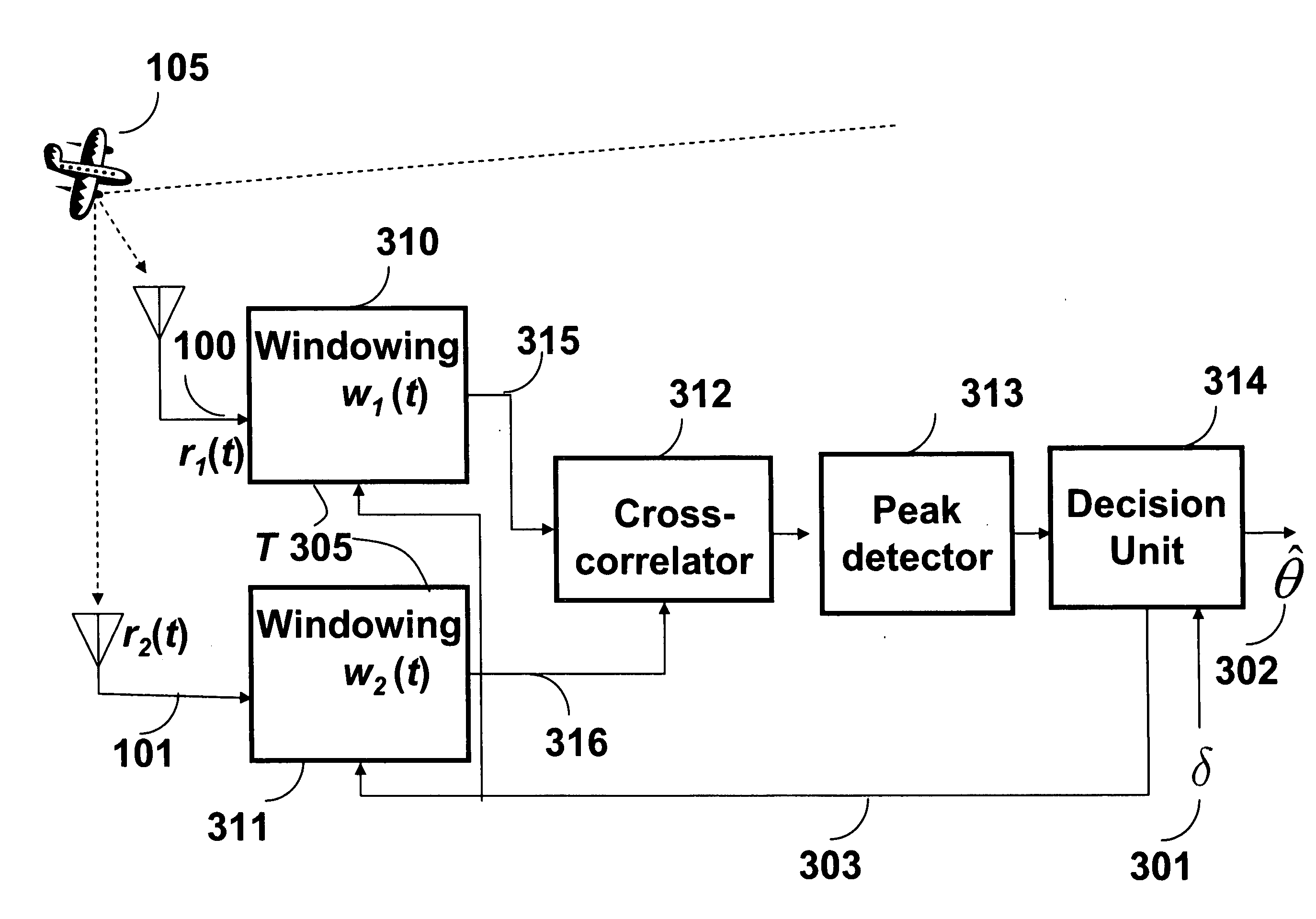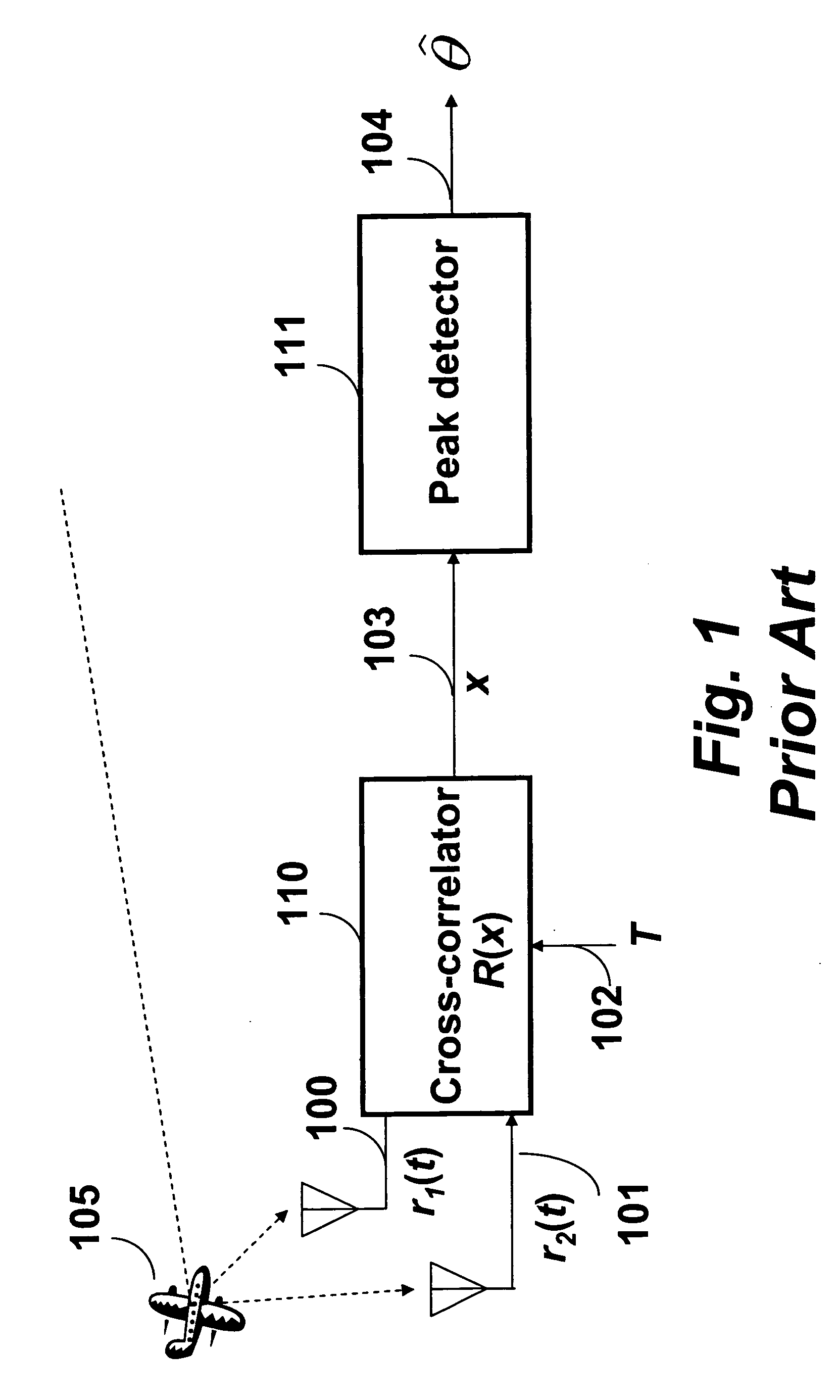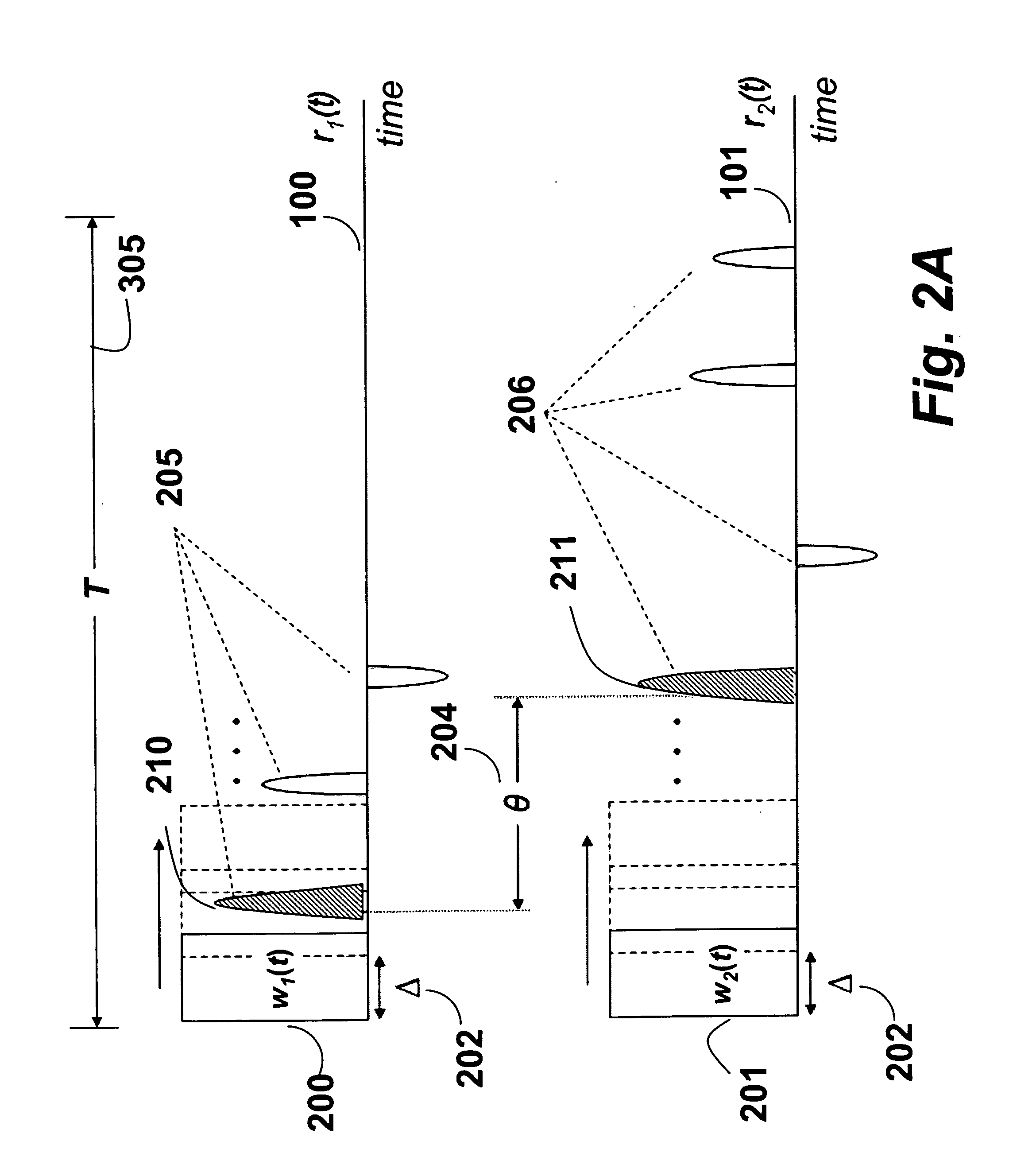Radio ranging using sequential time-difference-of-arrival estimation
a time-difference of arrival and ranging technology, applied in the field of radio communication systems, can solve the problems of fading, interference, frequency selectivity, and processing does not account for the phenomenon of fading, and achieve the effect of reducing errors
- Summary
- Abstract
- Description
- Claims
- Application Information
AI Technical Summary
Benefits of technology
Problems solved by technology
Method used
Image
Examples
Embodiment Construction
[0022]The embodiments of our invention provide a method and system for determining a position of a target objects by measuring time delays between pairs of radio signals received from the target object by passive sensors.
[0023]As shown in FIGS. 2A-2B and 3, we repeatedly apply 310-311 time-domain window functions w1(t) 200 and w2(t) 201 to a pair of received signals, a first signal r1(t) 100 and a second signal r2(t) 101 to produce windowed signals, 315-316. FIG. 2B shows the cross-correlations 250 for the first and last window positions in a correlation time interval 305. Typically, the window functions are identical and the correlation time interval 305 is shorter than the time between successive transmitted pulses.
[0024]As known in the art, and in contrast with filters used in conventional TDOA systems, a window function or an apodization function performs a multiplication in the time domain. The window function is zero-valued outside of the window interval. For instance, a windo...
PUM
 Login to View More
Login to View More Abstract
Description
Claims
Application Information
 Login to View More
Login to View More - R&D
- Intellectual Property
- Life Sciences
- Materials
- Tech Scout
- Unparalleled Data Quality
- Higher Quality Content
- 60% Fewer Hallucinations
Browse by: Latest US Patents, China's latest patents, Technical Efficacy Thesaurus, Application Domain, Technology Topic, Popular Technical Reports.
© 2025 PatSnap. All rights reserved.Legal|Privacy policy|Modern Slavery Act Transparency Statement|Sitemap|About US| Contact US: help@patsnap.com



